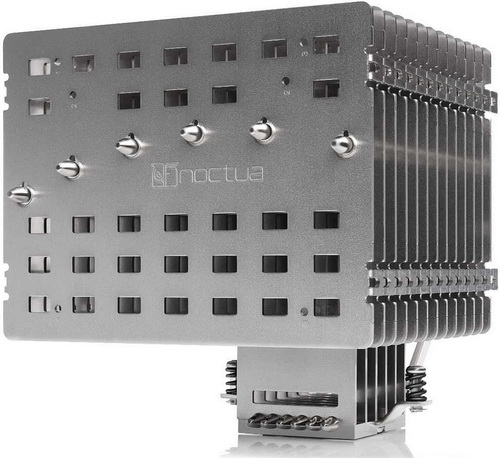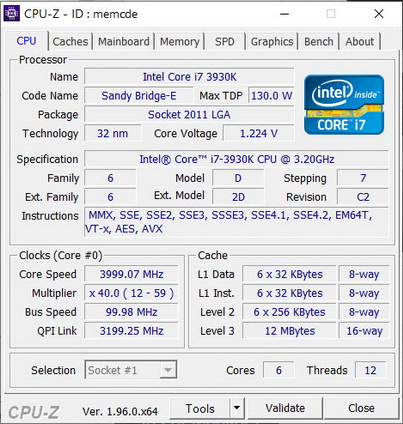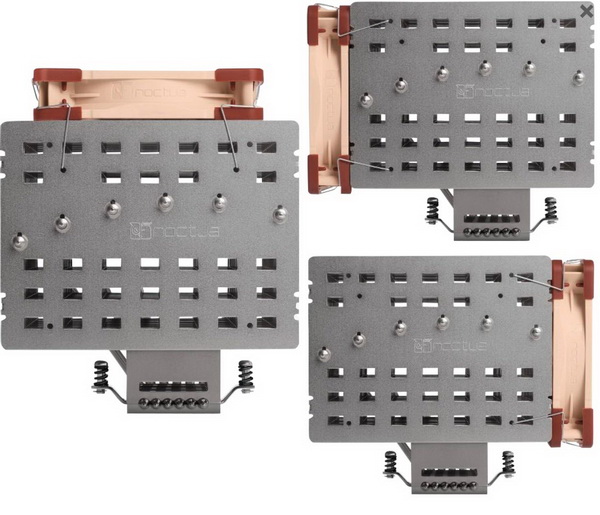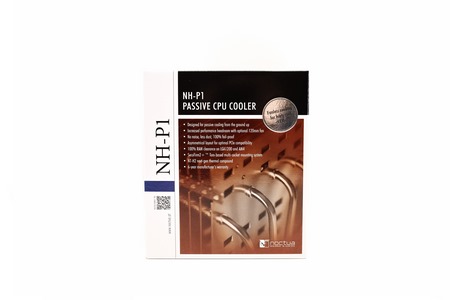INTRODUCTION

Total fin surface (thickness/area) is what all coolers basically come down to so size really does matter, at least in this segment of the industry. So, when any manufacturer needs to increase cooling efficiency the most effective way to go about that is to increase total fin surface and this of course applies to CPU coolers as well. Still the more and/or larger fins you add to a cooler (any type of cooler for that matter) the larger its size becomes which in turn reduces compatibility with PC cases. Take for example 120/240mm AIO liquid CPU coolers which unlike 360/420mm models are compatible with the majority of cases out there. Obviously, CPU air coolers are also "suffering" from the same issue but for those who seek passive cooling for their systems such models are clearly the only valid choice. The NH-P1 by Noctua is the latest such model to enter the market and today that's what i have on my test bench.
Designed in Austria, Noctua’s premium cooling components are internationally renowned for their superb quietness, exceptional performance and thoroughgoing quality. Having received more than 6000 awards and recommendations from leading hardware websites and magazines, Noctua’s fans and heatsinks are serving hundreds of thousands of satisfied customers around the globe.
The NH-P1 is a massive CPU cooler designed by the folks over at Noctua with one goal in mind, to provide passive cooling even to high-end CPU models, current ones included. Since it stands 158mm tall, 154mm wide and 152mm long it clearly wasn't made with the tiniest mini-ITX and micro-ATX cases out there in mind but thanks to its size it packs a total of 13 very large fins (each of which measures no less than roughly 1.5mm in thickness – this is almost 4 times more compared to those found on regular coolers) and a grand total of six 6mm nickel-plated copper heatpipes. To get a rather significant boost in performance with just a slight increase in noise levels Noctua recommends pairing their NH-P1 CPU cooler with their 120mm NF-A12x25 LS-PWM fan (ultra-quiet model) which you can mount either on the sides or the top (the where depends on both your motherboard and case). Well, it's been quite a while since i had a passive CPU cooler in the lab so let's see what the NH-P1 is capable of, both as a standalone solution and with the NF-A12x25 LS-PWM fan.
SPECIFICATIONS AND FEATURES

PACKAGING AND CONTENTS
As with most boxes by Noctua the front is taken by a partial product picture, their logo and the main product features.
On the left side of the box as usual we find a few words about the product in 9 languages.

 The product specifications are placed on the right side of the box while the features are located at the rear.
The product specifications are placed on the right side of the box while the features are located at the rear.
Once again both the bundle and the cooler itself are placed inside cardboard boxes.
Along with the NH-P1 you will also get an NT-H2 thermal paste tube, NA-CW1 cleaning wipe, Philips screwdriver, 2 fan clips, metal case badge, backplate, installation instructions (3 manuals) and all the necessary bits and pieces to mount the cooler onto Intel LGA 1150/1151/1155/1156/1200/2011/2011-3/2066 and AMD AM2/AM2+/AM3/AM3+/AM4/FM1/FM2/FM2+ compatible mainboards.
THE NH-P1
As mentioned earlier the 1180g heavy body of the NH-P1 stands 158mm tall, 154mm wide and 152mm long.
Noctua has used a total of 13 fins (roughly 1.5mm in thickness each).
To make it possible for end users to mount fans on the sides and top Noctua has placed numerous fan clip mounting holes on both the front and rear.
All six 6mm nickel-plater copper heatpipes pass through the 13 aluminum fins.
The base is polished and has no machine marks but doesn't feature a mirror-like finish.
For this test I’ll also be using the optional NF-A12x25 LW-PWM fan which can spin up to 1200RPM to produce up to 32.78CFM of airflow with just 12.1dBA of noise.

 Since i have four 140mm intake fans at the top of the case i decided to position the fan on the right side of the cooler as seen above.
Since i have four 140mm intake fans at the top of the case i decided to position the fan on the right side of the cooler as seen above.
TEST BED


TESTING METHODOLOGY
We always take things quite seriously when it comes to work so just like with the previous LGA1366 database we will not be testing each CPU Cooler on its own and with different ambient temperature levels and thus we can actually have yet another valid CPU Cooler database. Testing a CPU Cooler automatically means that you need to know where it stands against the immediate competition and to accomplish that we have spent both money and time through the years, something that we plan to continue to do so in order to get the most accurate results for the end consumers who read these lines. Every CPU cooler in this database is tested with the bundled 140mm/120mm/92mm/80mm fans while working at both idle speed and 100% of their speeds for all the temperature tests. CPU Coolers that do not come bundled with a fan/s are measured using a Noctua fan (size dependent on the model) to test for the temperature tests but due to the lack of a stock fan dBA level tests are obviously skipped. Single (120/140mm) watercooling solutions are tested with the radiator mounted at the rear of our test rig while dual/triple/quad (240/260/280/360/420/480/560mm) solutions with the radiator mounted at the top. For the dBA tests every cooler in the database was measured both while on idle mode or with the fan controller in the minimum setting and while on extreme load or with the fan controller all the way to the highest possible setting (PWM fans do that on their own without our intervention). Every single test takes place in a temperature controlled room of 23 degrees Celsius Ambient Temp with the help of two AC units placed diagonally inside the room. The Noctua NT-H1 thermal paste is used with every CPU Cooler in our latest LGA2011 database (although initially this was not the plan, we had to change things to get the most accurate results). Finally, it's very important to point out that just because a CPU Cooler is better than another when tested with our test rig that does not necessarily mean that the same performance differences will apply 100% for other CPU models and in other situations (such as different ambient temps and system configurations).
To successfully record the load temperatures, we use the latest OCCT application for around 6-10 minutes to push the processor to its limits and after that is done and the temperatures are recorded, we wait for about 10-20 minutes for the CPU to cool down and record the idle temperatures. This is done to allow time for the thermal conductive material to achieve the optimal performance level. Same procedure is then repeated with the Passmark BurnIn Test as a failsafe just in case the OCCT results are wrong. This procedure is more time consuming than the usual peltier/thermometer tests but this way not only can we deliver real world results to our readers based on real CPUs but we can also triple check the results using a variety of programs. Last but not least the temperatures were recorded using both the latest versions of AIDA64 and RealTemp while the noise level tests are performed using a high precision ExTech HD600 Decibel Meter placed about 10-15cm above the CPU Cooler. Still although the same testing procedure applies to all units do take into consideration that unlike the official numbers which are measured in special noise isolated labs with just the fans here, we also have both the rest of the cooler and the rest of the system (although all system fans are turned off when recording noise levels).
TEST RESULTS


CONCLUSION

Last time I had a passive CPU cooler here was back in 2016 with the Le Grand Macho by Thermalright (with which they are exchanging blows - review here) so it was nice to see that the industry hasn’t given up on the concept. Cooling efficiency aside however the NH-P1 sports probably the best build quality I’ve seen with any passive CPU cooler, at least to date. If I was to exclude some all-copper models i could actually go as far as to say that it sports the best build quality, I’ve seen on an CPU cooler regardless of type. True putting this much effort on a passive model may sound as a bit much for some people but I reckon there are always those who do care about these things. And then there’s the NF-A12x25 LS-PWM Ultra-Noise 120mm fan which may not deliver the highest possible performance but with it I was able to “tame” both my 11900k and 5900x CPUs (stock frequencies). Overall no complaints for me in terms of performance, but what about cost?
Unfortunately, superior build quality also means higher cost and so the NH-P1 currently retails for no less than USD109.90 inside the USA (Amazon.com) and for 107.90Euros inside the EU (Amazon.de). On top of that add another USD29.90/29.90Euros for the NF-A12x25 LS-PWM fan (if you need it that is) and well, you get the idea. Bottom line if you are in need either for a passive CPU cooler or one which is literally inaudible then the NH-P1 by Noctua should be your number one choice and for that it gets the Golden Award.

PROS
- Excellent Build Quality
- Very Good Performance
- Passive Cooling (Silent)
- 3 Fan Mounting Spots (Left/Right/Top)
- 6 Year Warranty
- Bundle
CONS
- Size (Clearance Issues)
- Price (For Some)

 O-Sense
O-Sense

















.png)

